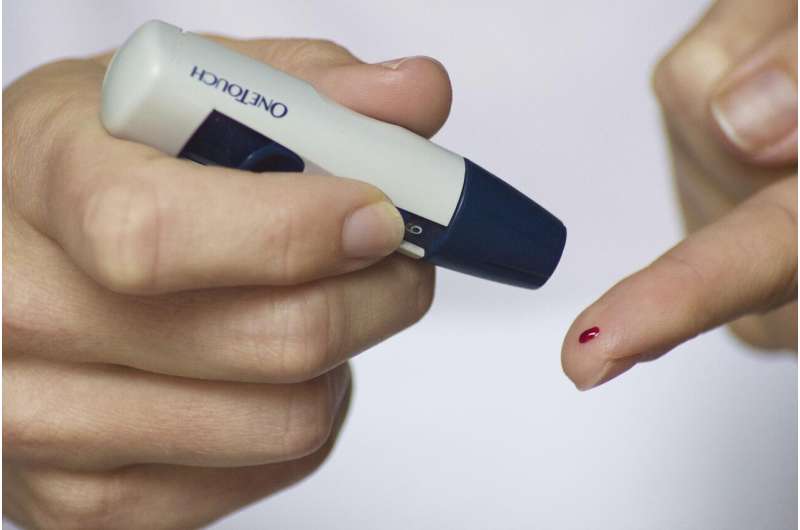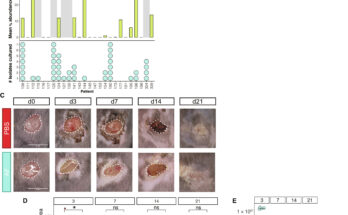
In a potential game changer for patients with type 2 diabetes, a team of researchers at the Diabetes, Obesity, and Metabolism Institute (DOMI) at the Icahn School of Medicine at Mount Sinai has identified a therapeutic target for the preservation and regeneration of beta cells (β cells)—cells in the pancreas that produce and distribute insulin. The discovery could prevent insulin resistance and thus have significant benefits for millions of people worldwide. The results of the study were published in Nature Communications in July.
All major forms of diabetes are caused by insufficient β-cell mass. When blood glucose levels rise in the body, such as in response to a high-fat diet, β cells respond by producing and releasing more insulin to bring blood glucose levels under control. But prolonged high blood glucose, known as hyperglycemia, can impair the ability of β cells to produce and secrete insulin. This results in a vicious cycle of ever-increasing glucose levels and ever-declining β-cell function, leading to β-cell death—a phenomenon known as glucose toxicity. Thus, preservation and regeneration of β cells is a therapeutic goal for diabetes.
The Mount Sinai research team found a molecular mechanism that appears to be involved in β-cell preservation and regeneration involving carbohydrate response-element binding protein (ChREBP). The researchers showed that production of a hyperactive isoform of this protein, ChREBPβ, is necessary to produce more β cells in response to an increased demand for insulin in the body due to a high-fat diet or significant glucose exposure. However, prolonged, increased glucose metabolism can result in a vicious cycle in which ChREBPβ is overproduced, resulting in glucose toxicity in the β-cells and their subsequent death.
The research team found that it was possible to counteract the effects of ChREBPβ and the β-cell death they observed by increasing expression of an alternate form of the protein, ChREBP⍺, or by activating nuclear factor-erythroid factor 2 (Nrf2)—a protein that protects cells from oxidative damage—in mice and human β cells, thus preserving β-cell mass.
“Traditionally, ChREBP was thought to be a mediator of glucose toxicity, but we noticed one form, ChREBPa, appeared to protect beta cells” said Donald Scott, Ph.D., a Professor of Medicine (Endocrinology, Diabetes and Bone Disease) at Icahn Mount Sinai, and a member of DOMI and of The Mindich Child Health and Development Institute. “By using tools we developed that enabled us to interrogate these isoforms independently, we found that ChREBPβ plays a key role in the gradual destruction of β cells. Thus, we believe it is a marker of hyperglycemia and glucose toxicity.”
“Moreover, we found that if you remove ChREBPβ or counteract it pharmacologically, you can mitigate the effects of glucose toxicity and protect those cells. This exciting discovery creates an opportunity to develop therapeutic agents that target this molecular mechanism, effectively block ChREBPβ production, and thus preserve β-cell mass. This would not only address the challenge that has driven diabetes research for years but also prevent patients with type 2 diabetes from becoming insulin dependent due to loss of β-cell mass, which would have a significant impact on outcomes and quality of life.”
Based on these findings, the research team is interested in exploring the impact of ChREBPβ overproduction in patients with type 1 diabetes, which differs from type 2 diabetes in that the pancreas does not produce any insulin. The team is also interested in screening for more molecular mechanisms that have the potential to block ChREBPβ production and thus prevent glucose toxicity and the subsequent death of β cells. Furthermore, there are plans to investigate whether the vicious cycle that was observed in this study occurs in other tissues in which ChREBPβ is expressed, such as kidney, liver, and adipose, or body, fat, and thus might contribute to diabetic complications.
“This study was made possible by bringing together the full breadth of DOMI expertise in areas such as RNA sequencing, three-dimensional imaging, and bioinformatics. Our findings provide a foundation for preserving existing β-cell mass and for developing new therapeutic approaches that have the potential to successfully prevent thousands of type 2 diabetes patients from progressing to insulin dependence,” said the study’s lead author Liora S. Katz, Ph.D., Assistant Professor of Medicine at Icahn Mount Sinai.
Liora S. Katz et al, Maladaptive positive feedback production of ChREBPβ underlies glucotoxic β-cell failure, Nature Communications (2022). DOI: 10.1038/s41467-022-32162-x
Citation:
Researchers identify potential target for treatment among patients with type 2 diabetes (2022, August 4)
retrieved 7 August 2022
from https://medicalxpress.com/news/2022-08-potential-treatment-patients-diabetes.html
This document is subject to copyright. Apart from any fair dealing for the purpose of private study or research, no
part may be reproduced without the written permission. The content is provided for information purposes only.
Source link




